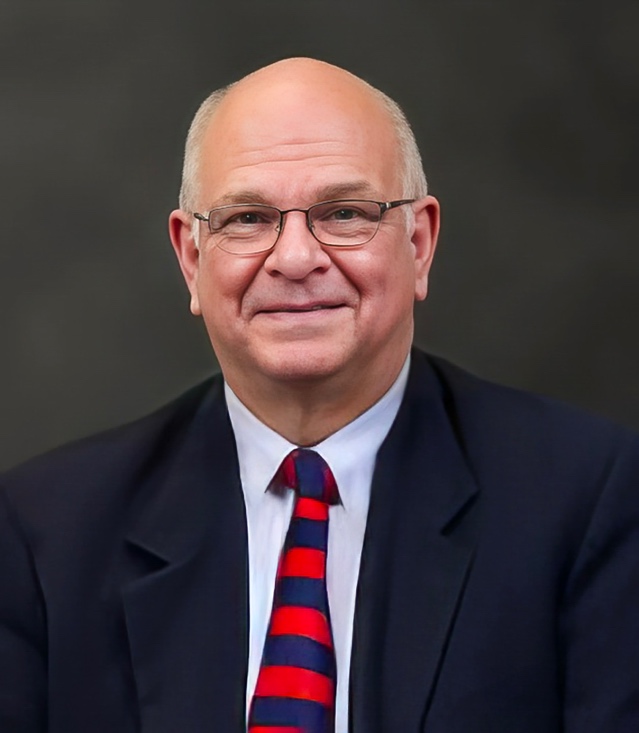Long-time faculty member named distinguished emeritus professor
Long-time faculty member named distinguished emeritus professor Heading link

Michael Stroscio was named distinguished emeritus professor in the electrical and computer engineering department after 22 years at UIC. He retired in September 2022 and his appointment was finalized in February.
Stroscio has wide research interests across disciplines, including electrical, optical, and mechanical properties of nanostructures; quantum transport; solid state electronics and optoelectronics; phonons in nanostructures, theory of nanodevices; and applications of nanoscale structures and devices in electrical engineering and bioengineering.
Stroscio obtained his undergraduate degree in physics from the University of North Carolina at Chapel Hill, and graduate degrees in Physics from Yale University. He spent about 30 years in various government agencies after he obtained his PhD, including the U.S. Air Force Research Laboratory, Los Alamos National Laboratory, Johns Hopkins Applied Physics Laboratory, the U.S. Air Force Office of Scientific Research, the White House Office of Science and Technology, the Pentagon, and the U.S Army Research Office. During much of his time with the U.S. government, Stroscio held adjunct teaching appointments at both Duke University and North Carolina State University, where he taught electrical and computer engineering, and physics.
Stroscio and his wife, Mitra Dutta, joined UIC in 2001 when they both left full-time government positions (as of January Dutta is also a distinguished professor emerita). The pair found five universities that would offer both positions.
“We decided UIC was the best fit; it has a policy of trying to help students,” Stroscio said. “If you’re trying to help students you take as many as you can, and supervise them in their master’s and PhD studies.”
Strosicio graduated students in electrical and computer engineering, biomedical engineering, and physics throughout his time at UIC.
“They worked as a team, we had a large group of people interested in interdisciplinary research,” Stroscio said.
Stroscio may be retired, but he hasn’t finished conducting research at UIC. In addition to the emeritus appointment through electrical and computer engineering, he holds a courtesy adjunct appointment in biomedical engineering and has one graduate student and an active grant.
Stroscio’s current work is on the quantum mechanical aspects of entanglement, and making calculations on photon scattering, as well as on modeling the interaction of nanostructures with spontaneous polarizations on biological structures such as ion channels. When photons scatter from one other, they can become entangled. Quantum dots and two-dimensional structures have built-in spontaneous polarizations, which can be used to switch voltage-gated ion channels in the membranes of many biological cells. By switching the ion channels, you can copy many functions that occur in biological systems signaling.
In addition to holding the title of distinguished professor at UIC, Stroscio also held a Richard and Loan Hill professorship. With this endowed professorship came flexible funding, allowing Stroscio to visit Washington, D.C., to meet program managers to interest them in proposals, support students who were unsupported in the initial phases of their research, and travel internationally.
“I’ve received a couple dozen different grants over my 22 years, and that was supplemented by being a Hill Professor,” Stroscio said. “I have to thank Dr. Richard Hill for everything he’s done for UIC, because it certainly made it easier for me to conduct research and obtain grants.”
Stroscio has had a varied career, exploring different areas from physics to optoelectronics, nanoelectronics, and applying nanoscience and engineering to biological systems.
“The basic foundation of my work was based on my graduate research in quantum electrodynamics,” Stroscio said. “It’s a field that really has stayed the same for over 50 years, and quantum mechanics is over 100 years old.”
Of all of Stroscio’s research accomplishments, his book Phonons in Nanostructures, published with Mitra Dutta in 2001, is a standout for him. Published by Cambridge University Press, the book has been cited around 650 times.
Stroscio is also proud of the work UIC does to serve as many students as possible.
“I think the most important thing about UIC is that it’s been adaptable to serve many students, bringing students into the undergraduate program and giving them a basic education,” he said. “It’s really pretty impressive the way UIC has been able to do that.”